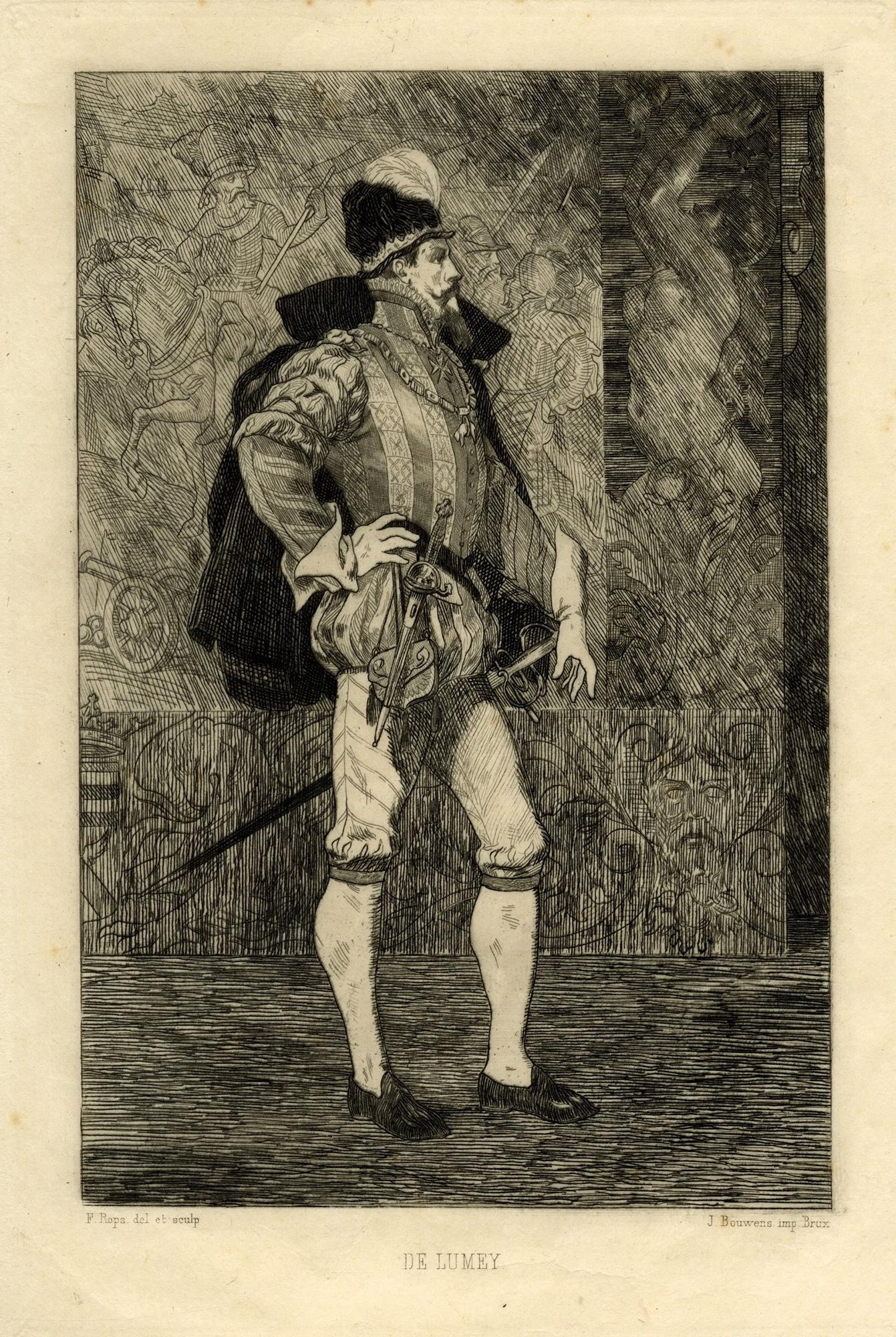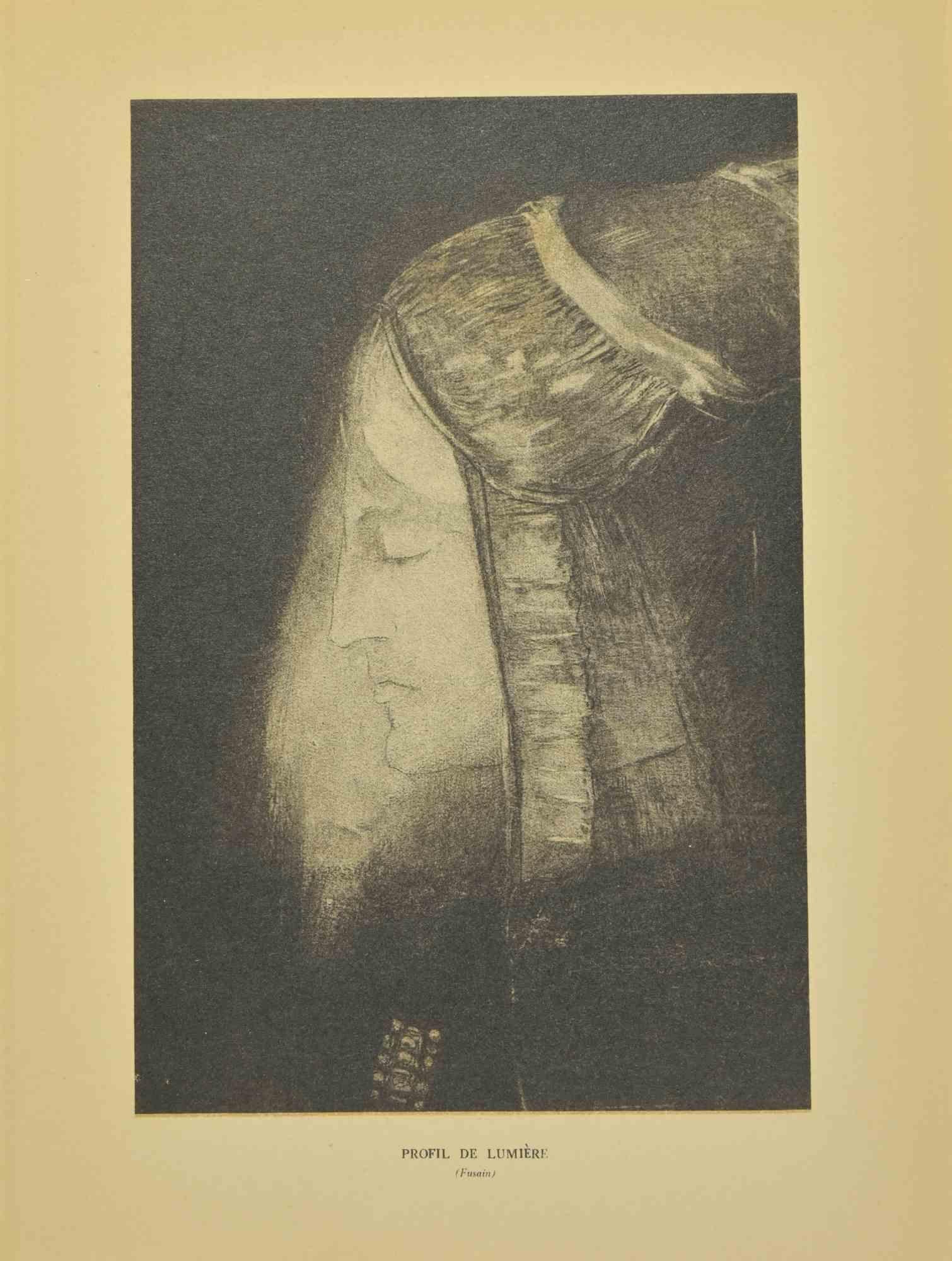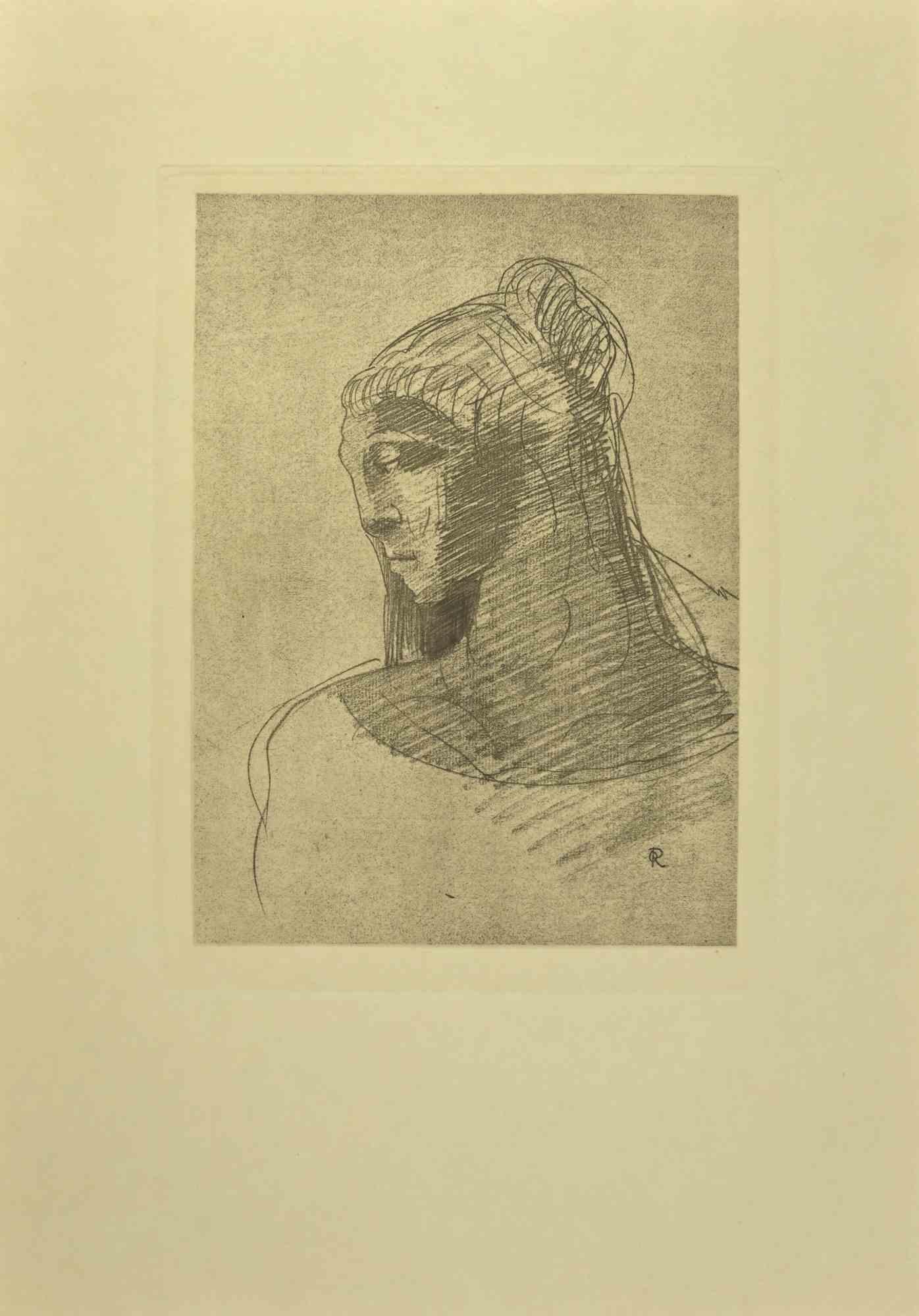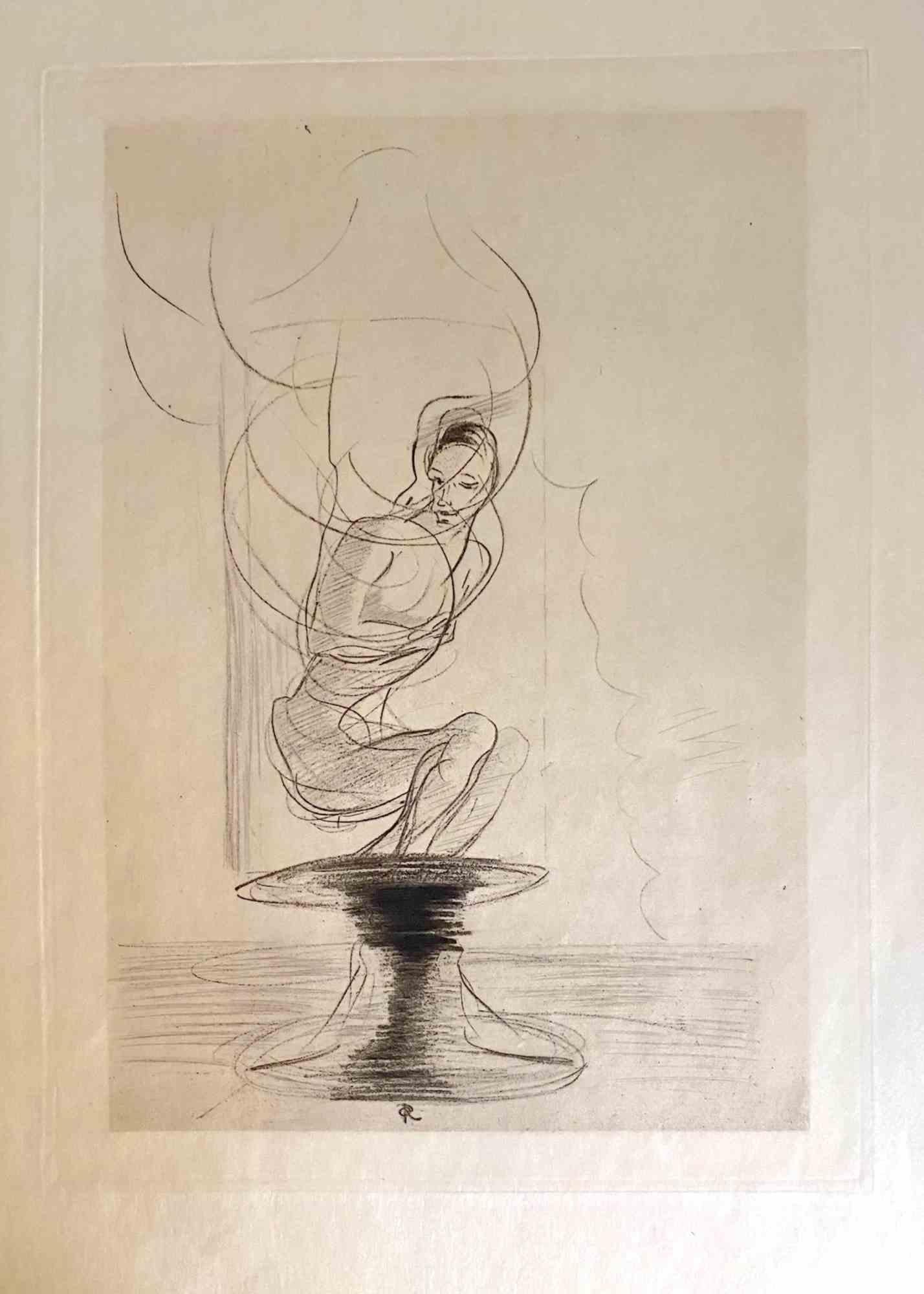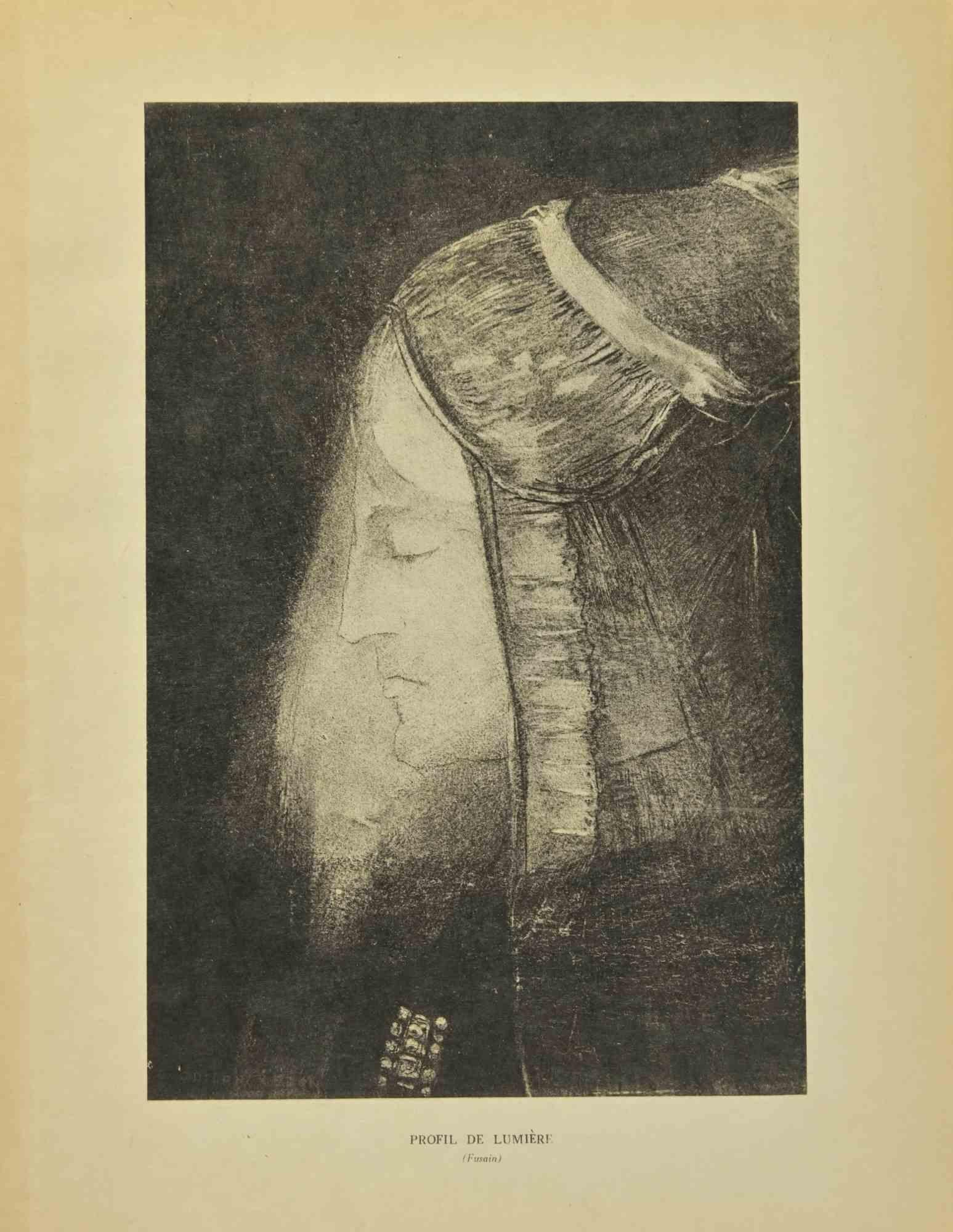Items Similar to Portrait of Stefan George - Woodcut by Reinhold Lepsius- Early 1900
Want more images or videos?
Request additional images or videos from the seller
1 of 5
Reinhold LepsiusPortrait of Stefan George - Woodcut by Reinhold Lepsius- Early 1900Early 1900
Early 1900
About the Item
"Portrait of Stefan George" is an original woodcut on brown-colored paper, realized by Reinhold Lepsius (1857-1922).
The state of preservation of the artwork is very good.
Sheet dimension: 45 x 32 cm.
The artwork represents a beautiful portrait of the poet Stefan George. Monogrammed. The signature of the Artist and of the poet, on the lower left. Sigla D.K.V., on the lower right.
Reinhold Lepsius was a German painter, especially of portraits, and graphic artist. He was born in Berlin, the son of Karl Richard Lepsius (1810–1884), professor at the Frederick William University and founder of the Egyptian Museum, and his wife Elisabeth Klein (1828–1899), daughter of the composer Bernhard Klein and great-granddaughter of Friedrich Nicolai. His younger brother Johannes Lepsius became a Protestant theologian, humanist and orientalist.
Reinhold Lepsius was stylistically affiliated with the Berlin Secession school and to some degree with German Impressionism. He was one of the first portraitists to paint after photographs. Lepsius became known for his portraits of the archaeologist Ernst Curtius, the philosopher Wilhelm Dilthey, and the poet Stefan George who organized literary soirées at his house in Westend. He was elected a member of the Prussian Academy of Arts in 1916 and also joined the Deutscher Künstlerbund (Association of German Artists).
He was married to the painter Sabine Lepsius, née Graef (1864–1942), sister of the art historian Botho Graef. The couple had a son, Stefan, born in 1897 and named after Stefan George. He was killed in World War I in early April 1917. Lepsius died in Berlin five years later, aged 64. Numerous of his portraits commissioned by Jewish clients have come to be regarded as lost after Nazi looting.
- Creator:Reinhold Lepsius (1857 - 1922)
- Creation Year:Early 1900
- Dimensions:Height: 17.72 in (45 cm)Width: 12.6 in (32 cm)Depth: 0.04 in (1 mm)
- Medium:
- Movement & Style:
- Period:
- Framing:Framing Options Available
- Condition:Insurance may be requested by customers as additional service, contact us for more information.
- Gallery Location:Roma, IT
- Reference Number:
About the Seller
4.9
Platinum Seller
These expertly vetted sellers are 1stDibs' most experienced sellers and are rated highest by our customers.
1stDibs seller since 2017
6,739 sales on 1stDibs
Typical response time: 2 hours
- ShippingRetrieving quote...Ships From: Grasse, France
- Return PolicyA return for this item may be initiated within 14 days of delivery.
More From This SellerView All
- Portrait - Lithograph after Odilon Redon - 1923By Odilon RedonLocated in Roma, ITPortrait is a lithograph realized after Odilon Redon. They belong to the suite "Odilon Redon Peintre, Dessinateur et Graveur", published by Henri Felury in 1923. Good conditions, ...Category
1920s Symbolist Figurative Prints
MaterialsLithograph
- Profil De Lumière - Lithograph after Odilon Redon - 1923By Odilon RedonLocated in Roma, ITProfil De Lumière is a lithograph realized after Odilon Redon. It belongs to the suite "Odilon Redon Peintre, Dessinateur et Graveur", published by Henri Felury in 1923. Good cond...Category
1920s Symbolist Figurative Prints
MaterialsLithograph
- Illustration from the Series "Les Fleurs du Mal" after Odilon Redon - 1923By Odilon RedonLocated in Roma, ITIllustration from the series "Les Fleurs du Mal" is an etching print realized after Odilon Redon and published by Henri Felury in 1923. Monogrammed on the plate. Good conditions. ...Category
1920s Symbolist Figurative Prints
MaterialsLithograph
- Illustration from the Series "Les Fleurs du Mal" after Odilon Redon - 1923By Odilon RedonLocated in Roma, ITIllustration from the series "Les Fleurs du Mal" is an etching print realized after Odilon Redon and published by Henri Felury in 1923. Monogrammed on the plate. Good conditions. ...Category
1920s Symbolist Figurative Prints
MaterialsLithograph
- Profil de Lumière - Lithograph after Odilon Redon - 1923By Odilon RedonLocated in Roma, ITProfil de Lumière is a phototype reproduction realized after Odilon Redon. They belong to the suite "Odilon Redon Peintre, Dessinateur et Graveur", published by Henri Felury in 192...Category
1920s Symbolist Figurative Prints
MaterialsLithograph
- Junge Frau mit Blumenvase - Original Etching by Karl Koepping - 1910Located in Roma, ITJunge Frau mit Blumenvase (Young Woman with a flower vase) is a wonderful black and white etching with aquatint and drypoint interventions on cream-colored paper, realized in 1910 b...Category
1910s Symbolist Figurative Prints
MaterialsEtching, Aquatint
You May Also Like
- Le Sire De LumeyBy Félicien RopsLocated in Middletown, NYBrussels: J. Bouwens, 1867. Etching with aquatint and engraving on laid Japan paper, 9 3/4 x 6 1/2 inches (247 x 163 mm), full margins. Fifth state (of 5). Scattered moderate foxing....Category
Late 19th Century Symbolist Portrait Prints
MaterialsLaid Paper, Engraving, Etching, Aquatint
- Kraft und Mut (Courage and Strength), German antique engravingLocated in Melbourne, Victoria'Kraft und Mut' (Courage and Strength) German wood-engraving, 1903. 320mm by 230mm (image) 280mm by 410mm (sheet)Category
Early 20th Century Symbolist Figurative Prints
MaterialsEngraving
- Serenity. 1992., paper, lithograph, 65x50, 3 cmBy Alain RothsteinLocated in Riga, LVSerenity. 1992., paper, lithograph, 65x50,3 cmCategory
1990s Symbolist Portrait Prints
MaterialsPaper, Lithograph
- Abel Pann Israeli Bezalel School Lithograph Judaica Biblical Print Jewish ArtBy Abel PannLocated in Surfside, FLAbel Pann (1883–1963) was a European Jewish painter who settled in the Talpiot neighborhood of Jerusalem in the early twentieth century and taught at the Bezalel Academy of Art under...Category
Mid-20th Century Symbolist Figurative Prints
MaterialsLithograph
- Abel Pann Israeli Bezalel School Lithograph Judaica Biblical Print Jewish ArtBy Abel PannLocated in Surfside, FLAbel Pann (1883–1963) was a European Jewish painter who settled in the Talpiot neighborhood of Jerusalem in the early twentieth century and taught at the Bezalel Academy of Art under Boris Schatz. Abba Pfeffermann (later Abel Pann), born in Latvia or in Kreskowka, Vitebsk, Belarus, was a European Russian Jewish art...Category
Mid-20th Century Symbolist Figurative Prints
MaterialsLithograph
- Abel Pann Israeli Bezalel School Lithograph Judaica Biblical Print Jewish ArtBy Abel PannLocated in Surfside, FLAbel Pann (1883–1963) was a European Jewish painter who settled in the Talpiot neighborhood of Jerusalem in the early twentieth century and taught at the Bezalel Academy of Art under Boris Schatz. Abba Pfeffermann (later Abel Pann), born in Latvia or in Kreskowka, Vitebsk, Belarus, was a European Russian Jewish artist who immigrated to Ottoman Palestine and settled in Jerusalem. He was married to Esther Nussbaum. Pann's youngest son was killed in the 1947–1949 Palestine war. After that loss, he turned to painting scenes of the Holocaust. He died in Jerusalem in 1963. Pann studied the fundamentals of drawing for three months with the painter Yehuda Pen of Vitebsk, who also taught Marc Chagall. In his youth, he traveled in Russia and Poland, earning a living mainly as an apprentice in sign workshops. In 1898 he went south to Odessa, where he was accepted into the Academy of Fine Arts. In 1903, he was in Kishinev, where he documented the Kishinev pogrom with drawings; an effort that is thought to have contributed to his self-definition as an artist who chronicles Jewish history. Still in 1903, he moved to Paris, where he rented rooms in La Ruche, a Parisian building (which still exists) where Modigliani, Chagall, Chaim Soutine and other Jewish artists also lived. Pann studied at the French Academy under William-Adolphe Bouguereau. He earned his living primarily by drawing pictures for the popular illustrated newspapers of the era. In 1912, Boris Schatz, founder and director of the Bezalel Academy of Arts and Design visited Pann in Paris and invited him to come work in Jerusalem. In 1913, after traveling in Southern Europe and Egypt, Pann arrived in Jerusalem, where he had decided to settle for life. Pann went to see Schatz and it was decided that he would head the painting department at the Bezalel Academy for several months while Schatz embarked on an extensive overseas fund-raising trip. According to Haaretz art critic Smadar Sheffi, a work form this period with the simple title "Jerusalem" shows a cluster of buildings at sunset "with a sky in blazing orange." The painting is "more expressive and abstract that is typical of his work," and Sheffi speculates that "the encounter with the city" of Jerusalem was a "strong emotional experience" for the artist. Pann returned to Europe to arrange his affairs before moving permanently to the British Mandate of Palestine, but was caught on the continent by World War I. Pann's wartime paintings would prove to be among "the most important" of his career. He made many posters to support the French war effort. He also made a series of fifty drawings showing the extreme suffering of Jewish communities caught in the fighting between Germany, Poland and Russia. Art critic Smadar Sheffi regards them as "the most important part of his oeuvre." These "shocking" drawings put modern viewers in mind of depictions of the Holocaust. Pann's drawings were intended as journalistic documentation of the fighting and were successfully exhibited in the United States during the War. According to Pann's autobiography, the Russians, who were allied with the French, refused to allow a wartime exhibition of the drawings in France. According to The New York Times, the drawings were published in Paris during the war, but the government intervened to block their distribution on the grounds that they "reflected damagingly upon an ally" (Russia). Upon his return to Jerusalem in 1920, Pann took up a teaching position at the Bezalel Academy and wrote that he was about to embark on his life-work, the painting and drawing of scenes from the Hebrew Bible. He returned briefly to Vienna, where he met and married Esther Nussbaum and purchased a lithographic press, which the couple brought home to Jerusalem. Pann began work on a series of lithographs intended to be published in an enormous illustrated Bible, and although that series was never completed, he is widely admired for the series of pastels inspired by Bible stories that he began in the 1940s. The iconography of these works is linked to the 19th century orientalism. He was part of a movement of contemporary Jewish artists interested in Biblical scenes, including Ephraim Moses Lilien...Category
Mid-20th Century Symbolist Figurative Prints
MaterialsLithograph
Recently Viewed
View AllMore Ways To Browse
Jewish Woodcut
Portrait German Woodcut
Bernhard Antique
Orientalist Print
Orientalist Prints Art
Karl Johannes
Persian War
Small Curtain
Poor Head
African Sculpture Couple
Heart Garden Sculpture
Costume Design Sketch
Set Of Prints Soldiers
I Got A Flower
Monumental Painting Modernist
Jim Dine Hands
Copper Engravings Italy
New York Central Poster
